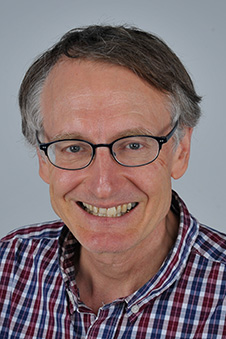
New Zealand Statues.
Controversy over public statues is nothing new, with protestors taking to New Zealand's statues with a range of weapons including an axe, a concrete cutter and a hammer over recent decades, a study by researchers from the University of Otago, Wellington, has found.
The researchers examined all 123 statues of named individuals identified on outdoor public land in New Zealand during a survey in 2018 and 2019, and found almost a quarter (23 per cent) had been attacked at least once.
Lead researcher Professor Nick Wilson says “the statue subject's role in past injustices and militarism appeared to increase the risk of attack”.
Attacks on statues have increased since 1990, and are often quite violent. Six statues have been decapitated a total of 11 times, while three were completely destroyed in attacks. Others have had noses cut off or been splattered with red, blue or gold paint.
“The statue of King George V in Matakana has been decapitated five times. A statue of World War I military leader Field Marshal Kitchener in Auckland was decapitated, probably with an axe, in 1931 and was then taken down and never replaced.”
Professor Wilson says an attempt by an anti-war demonstrator to topple a new bronze statue of military hero Charles Upham in Amberley in North Canterbury with a concrete cutter was stopped by people nearby and the statue later fully repaired.
Other statues have been damaged by paint or graffiti (14 per cent of all statues at least once), or had their noses cut off or damaged (seven per cent). One statue, that of military leader Admiral Sir Gordon Tait, was stolen from Timaru and never recovered.
The study, which has just been published online in SocArXiv, an open archive of the social sciences, is thought to be the first in the world to systematically examine attacks on public statues over a whole country.
The researchers' field work was often made easier by the low quality of repairs to damaged statues, making it possible to readily diagnose past 'injuries', Professor Wilson said.
“There were crude nose job repairs on the Queen Victoria statue in Dunedin and on the statue of Earl Jellicoe in Invercargill, whose nose had been missing for a previous 10-year period. Some statues were simply left unrepaired, with the Hokitika statue of Scottish poet Robbie Burns still missing his nose.”
Professor Wilson says statues of royalty (50 per cent), military personnel (33 per cent), politicians (25 per cent), explorers (29 per cent), and those involved in colonialism and harm to Māori were much more likely to be attacked – with no attacks at all recorded on statues of sports players.
The researchers found statues mostly represented historical and current power, with a large preponderance of white males, and an underrepresentation of women, Māori, Pacific and Asian peoples.
Most of the statue subjects were of men (87 per cent) and Europeans (93 per cent). Only six per cent of statues were of Māori, despite Māori comprising 15 per cent of the population, and only one per cent each commemorated those of Asian or Pacific ethnicity, despite them making up 12 per cent and seven per cent of the population respectively.

Professor Nick Wilson.
The statue of rugby hero, Sir Michael Jones, in Eden Park in Auckland was the only statue of a person with Pacific ethnicity identified in the survey.
The researchers note the study does not include a number of famous Māori leaders whose statues are located on marae, as the research was focused solely on public settings.
Professor Wilson says there are various ways of dealing with controversial statues – including moving them to more neutral or less 'honoured' locations and settings, such as statue parks, cemeteries, or even museum basements.
“Removal may be the appropriate action for a number of New Zealand statues including those of Sir George Grey in Auckland and John Ballance in Whanganui, both of whom were active in the colonial wars; that of Edward Gibbon Wakefield in Wellington, who was a colonialist who was also imprisoned for child abduction; Field Marshal Kitchener, who established concentration camps in the South African War; and Lord Auckland, who was a colonial figure involved in an invasion of Afghanistan and whose statue was imported to Auckland City when India wanted it removed,” he says.
Professor Wilson says some countries have found creative alternatives for dealing with unwanted statues, with Ukraine transforming one statue of Lenin into a statue of Darth Vader.
Another option could be to provide context for statues, by providing 'alternate history' statues beside them, or adding explanatory information boards.
In the longer term, Professor Wilson says such attacks would be less likely if governments deal better with the ongoing consequences of colonialism and inequality.
“In future, society could increasingly consider alternatives to statues, such as new civic assets named after significant people from underrepresented groups. Instead of statues, we could have more memorial libraries, sports centres, parks, gardens or even single 'memorial trees'.”
Publication details
The full article, 'Attacks on statues associated with social injustice and militarism: New Zealand as a case study' by Nick Wilson, Amanda Jones, Andrea Teng and George Thomson has been published in SocArXiv, an open archive of the social sciences.
You can read the full article here
The study was unfunded and carried out by the researchers in their spare time so as to inform the thinking about public monuments and issues of colonialism and militarism in New Zealand.
A previous blog published by Professor Nick Wilson and colleagues discussed the statue of Dr Margaret Cruickshank, New Zealand's first registered woman doctor, who died in the 1918 influenza pandemic while caring for her patients. The statue, in Waimate, is one of only a few in the country which commemorates a notable New Zealand woman.
Read the full blog here
For further information, contact:
Professor Nick Wilson
Department of Public Health
University of Otago, Wellington
Email nick.wilson@otago.ac.nz
Cheryl Norrie
Communications Adviser
University of Otago, Wellington
Mob +64 21 249 6787
Email cheryl.norrie@otago.ac.nz
FIND an Otago Expert
Use our Media Expertise Database to find an Otago researcher for media comment.